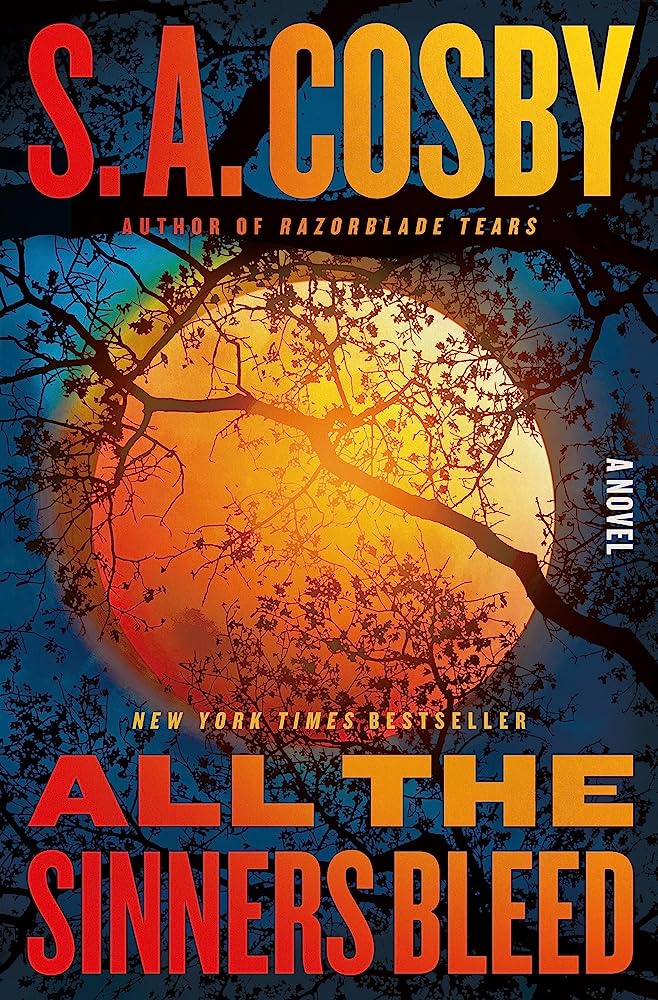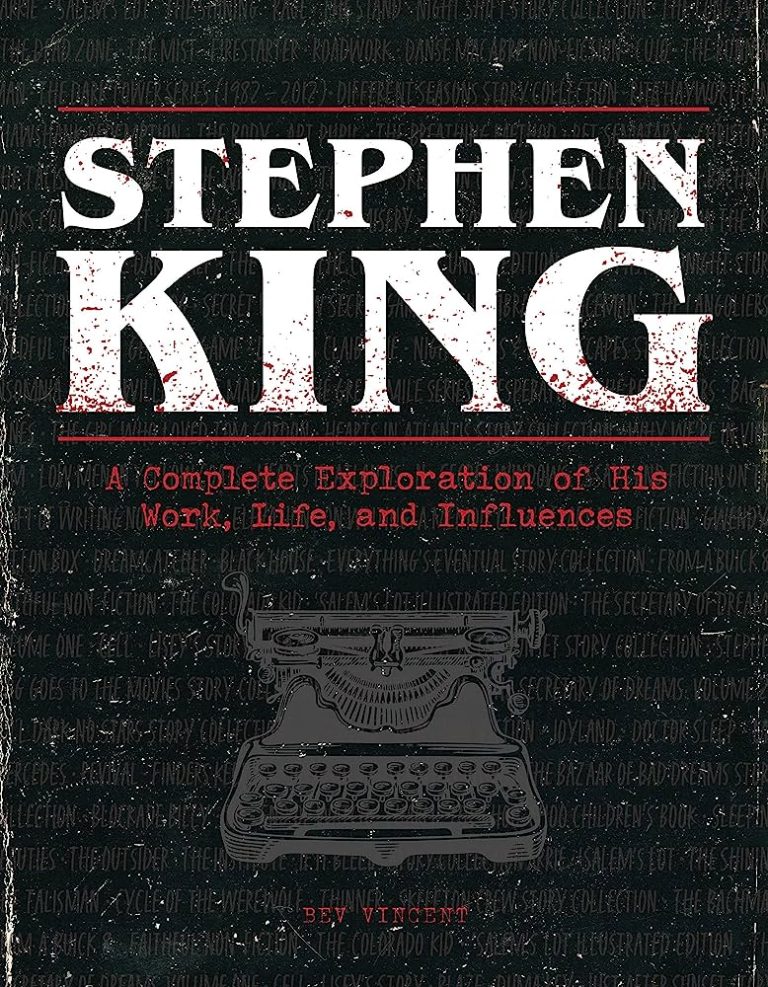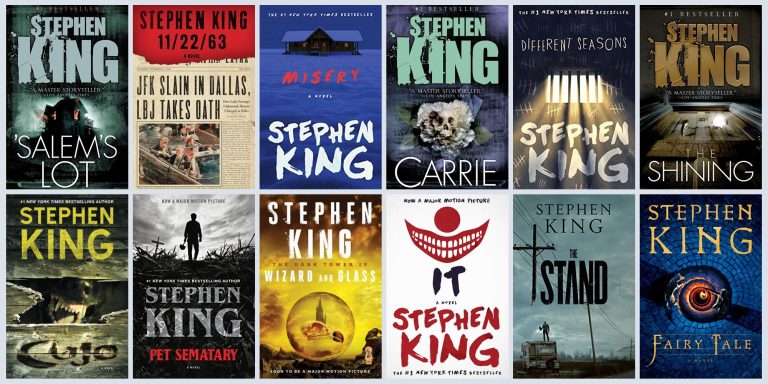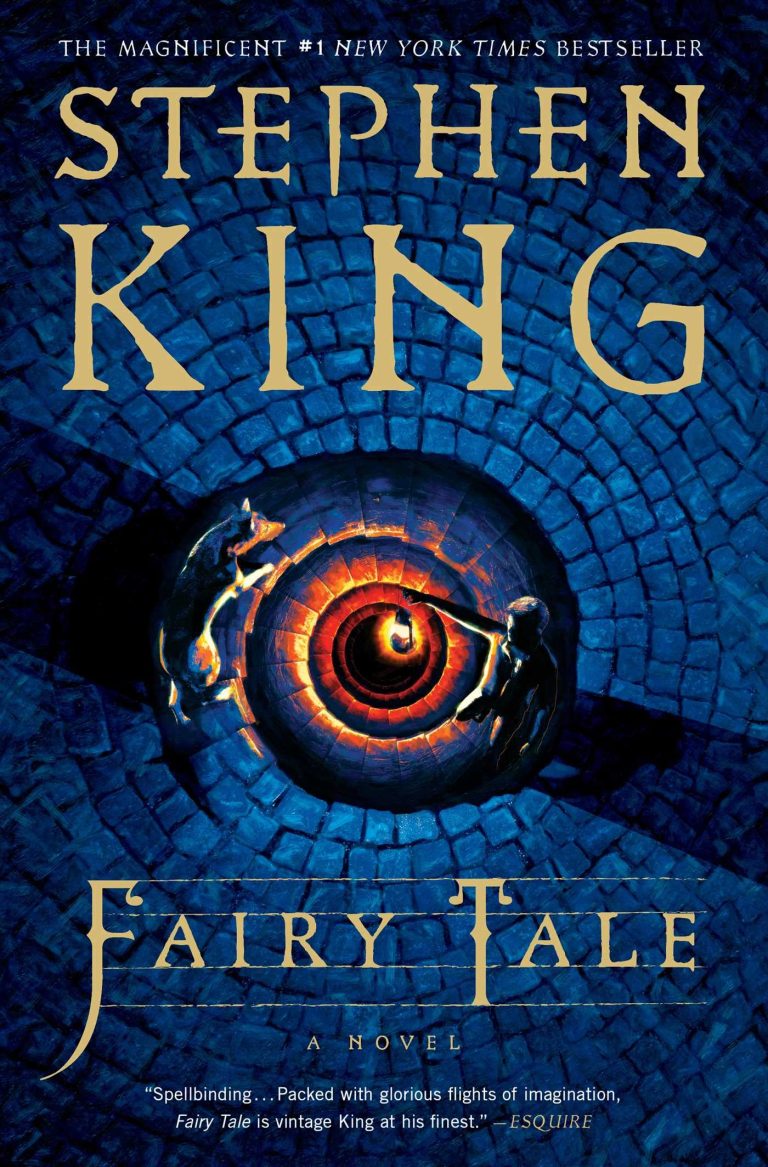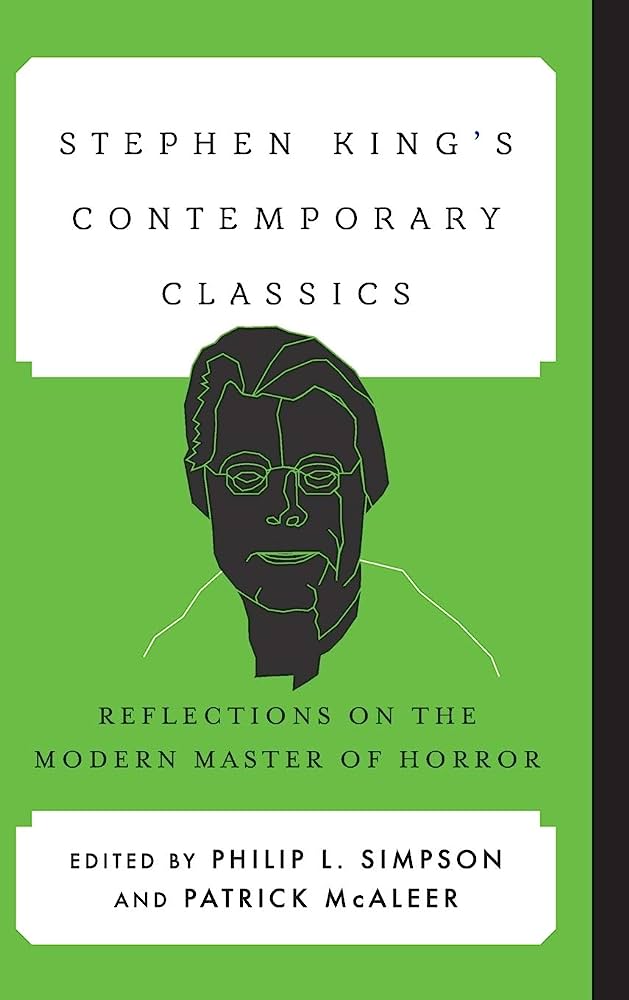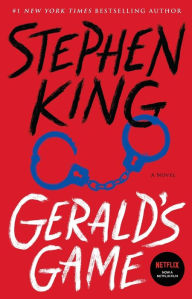The Essence Of Evil: Stephen King’s Most Terrifying Villains
Prepare to delve into the dark and twisted world of one of the greatest horror writers of all time, Stephen King. In this bone-chilling article, we will explore the essence of evil as depicted in King’s most terrifying villains. From the depths of the supernatural to the darkest corners of the human psyche, King’s characters will haunt your dreams and leave you trembling in fear. Get ready to meet the monsters that lurk within the pages of his novels and discover why they continue to send shivers down our spines.
Stephen King is a master at crafting villains that are more than just one-dimensional evil-doers. These characters are complex, deeply unsettling, and have the power to tap into our deepest fears. Whether it’s the demonic Pennywise from “It,” the sadistic Annie Wilkes from “Misery,” or the supernatural force of Randall Flagg from “The Stand,” King’s villains are hauntingly memorable. With his keen understanding of human nature and the power of darkness, King creates villains that resonate with readers long after the final page is turned.
Join us as we explore the twisted minds of Stephen King’s most terrifying villains, uncovering the darkness that lies within and the impact they have had on the horror genre. Get ready for a spine-tingling journey into the heart of evil.
Stephen King, the master of horror, has created some of the most terrifying villains in literature. From Pennywise the Clown in “It” to Annie Wilkes in “Misery,” King’s villains are unforgettable and haunting. These characters embody the essence of evil, captivating readers with their dark and twisted motives. Whether it’s the supernatural horrors of Randall Flagg or the psychological torment of Jack Torrance, King’s villains leave an indelible mark on the reader’s psyche. Brace yourself for a chilling journey as we explore Stephen King’s most terrifying villains.

The Essence of Evil: Stephen King’s Most Terrifying Villains
Stephen King is a master of horror, and his ability to create terrifying villains is unparalleled. From supernatural creatures to deranged individuals, King has introduced readers to a wide array of unforgettable antagonists. In this article, we will delve into the essence of evil as portrayed in some of Stephen King’s most chilling works, exploring the depths of darkness and the horrors that lie within.
The Shape-Shifting Malevolence of Pennywise the Clown
One of Stephen King’s most iconic villains is Pennywise the Clown from his novel “It.” This malevolent entity embodies the true essence of evil, preying on the fears and vulnerabilities of children in the town of Derry, Maine. Pennywise can shape-shift into the worst nightmares of his victims, luring them into his sinister web. With his eerie smile and haunting presence, Pennywise has become a symbol of terror in popular culture.
In “It,” King explores the concept of evil as a force that feeds on fear and preys on the innocent. Pennywise represents the embodiment of childhood fears and the horrors that lurk beneath the surface of seemingly ordinary lives. Through this character, King taps into the universal fear of the unknown and the loss of innocence, creating a truly terrifying antagonist.
The Haunting Influence of Annie Wilkes in “Misery”
In the novel “Misery,” Stephen King introduces readers to Annie Wilkes, a seemingly harmless and obsessive fan who becomes the captor of renowned author Paul Sheldon. Annie’s character is a chilling portrayal of the human capacity for evil and the dangers of obsession. As the story unfolds, Annie’s true nature is revealed, and her actions become increasingly sadistic and horrifying.
Annie Wilkes represents the dark side of human nature, showcasing the lengths to which a person can go when consumed by madness and obsession. King delves into the psychological aspects of evil, exploring the twisted mind of a character driven by her own distorted reality. The manipulation and torment inflicted by Annie make her one of King’s most terrifying villains, leaving readers on the edge of their seats.
The Supernatural Terror of Randall Flagg
Randall Flagg is a recurring character in Stephen King’s novels, often appearing as a malevolent force with supernatural abilities. Known by many names, including the Dark Man and the Walkin’ Dude, Flagg embodies the ultimate evil and chaos. He is a shape-shifter who manipulates individuals and entire societies, spreading destruction and despair wherever he goes.
Flagg represents the embodiment of evil on a grand scale, showcasing the power of corruption and the devastation it can bring. He is a master manipulator, preying on the weaknesses and vulnerabilities of those he encounters. With his enigmatic presence and malevolent influence, Flagg has become one of Stephen King’s most memorable and terrifying villains.
The Unsettling Presence of Jack Torrance in “The Shining”
In “The Shining,” Stephen King introduces readers to Jack Torrance, a struggling writer who becomes the caretaker of the isolated Overlook Hotel. As the story unfolds, Jack’s descent into madness becomes more apparent, fueled by the malevolent spirits that haunt the hotel. Jack’s transformation from a troubled but relatively normal individual to a violent and deranged antagonist is a chilling exploration of the darkness within.
“The Shining” delves into the concept of evil as an internal struggle, as Jack battles his own demons and succumbs to the malevolent forces of the hotel. King masterfully portrays the gradual unraveling of Jack’s sanity, creating a sense of unease and dread that lingers throughout the novel. Jack Torrance’s descent into madness serves as a cautionary tale, reminding readers of the dangers of unchecked darkness within.
The Psychological Terror of Norman Bates in “Psycho”
While Stephen King is primarily known for his novels, it is worth mentioning his admiration for Alfred Hitchcock’s film adaptation of “Psycho.” Norman Bates, the central character of the story, is a disturbed and complex individual whose actions blur the line between sanity and madness. As the proprietor of the Bates Motel, Norman hides a dark secret that unravels as the plot unfolds.
Norman Bates represents the psychological depths of evil, with his fragmented psyche and internal battles. King has often praised the character of Norman Bates for his complexity and the psychological terror he evokes. Through Norman, King explores the darker aspects of the human mind, delving into the depths of madness and the horrors that can arise from it.
The Otherworldly Horrors of “The Mist”
In “The Mist,” Stephen King takes readers on a journey into a small town overtaken by a mysterious mist filled with otherworldly creatures. These creatures, known as the Mist Monsters, embody the essence of evil, preying on human fear and vulnerability. King expertly weaves a tale of survival and desperation, showcasing the horrors that can emerge when faced with the unknown.
“The Mist” highlights the concept of evil as an external force that threatens to consume humanity. The Mist Monsters represent the unknown and the terrifying creatures that lurk just beyond the veil of our reality. King’s portrayal of these creatures instills a sense of dread and helplessness, making them some of his most terrifying villains.
The Unforgettable Antagonists of Stephen King
Stephen King has crafted a plethora of unforgettable villains throughout his career, each representing a different aspect of evil. From supernatural entities to disturbed individuals, King’s ability to create truly terrifying antagonists is unparalleled. The essence of evil pervades his works, leaving readers captivated and horrified in equal measure.
Through his captivating storytelling and unparalleled imagination, Stephen King has solidified his place as one of the greatest horror writers of all time. His ability to portray the essence of evil in such a visceral and chilling manner has earned him a devoted following and a lasting legacy in the world of literature.
In summary, Stephen King’s most terrifying villains are a testament to his mastery of the horror genre. From Pennywise the Clown to Annie Wilkes, Randall Flagg, Jack Torrance, Norman Bates, and the Mist Monsters, these characters embody different facets of evil and leave a lasting impact on readers. King’s ability to tap into the depths of darkness and explore the horrors that lie within the human psyche is what makes his villains truly unforgettable.
Key Takeaways: The Essence of Evil: Stephen King’s Most Terrifying Villains
- Stephen King has created some of the most terrifying villains in literature.
- These villains embody the essence of evil and haunt readers’ nightmares.
- King’s ability to delve into the dark depths of human nature is showcased through his villains.
- From Pennywise the Clown to Annie Wilkes, each villain is unique and unforgettable.
- King’s villains serve as a reminder of the power of fear and the darkness that lurks within us all.
Frequently Asked Questions
In this section, we will answer some commonly asked questions about the essence of evil in Stephen King’s most terrifying villains.
1. Who are some of Stephen King’s most terrifying villains?
Stephen King is known for creating some of the most chilling and memorable villains in literature. Some of his most terrifying villains include Pennywise the Dancing Clown from “IT,” Annie Wilkes from “Misery,” Randall Flagg from “The Stand,” Jack Torrance from “The Shining,” and the Overlook Hotel itself.
These characters have haunted readers for decades with their evil intentions, psychological manipulation, and sheer malevolence. Each villain is uniquely terrifying and contributes to the overall sense of dread that King’s stories are known for.
2. What makes Stephen King’s villains so terrifying?
Stephen King has a knack for creating villains that tap into our deepest fears and anxieties. His villains are often complex, multi-dimensional characters with a deep-seated darkness within them. They are not simply monsters, but rather, they possess a twisted humanity that makes them all the more terrifying.
Additionally, King’s villains often have supernatural abilities or powers, adding an extra layer of horror to their character. Whether it’s Pennywise’s shapeshifting abilities, Annie Wilkes’ psychotic obsession, or Randall Flagg’s manipulation of society, these villains possess a terrifying combination of psychological and supernatural elements.
3. How do Stephen King’s villains reflect the essence of evil?
Stephen King’s villains serve as a reflection of the darkest aspects of human nature. They embody the essence of evil in their actions, motivations, and the terror they inflict upon others. Through his villains, King explores the depths of human depravity and the forces that drive individuals towards acts of wickedness.
Furthermore, King’s villains often represent societal fears and anxieties. They act as a metaphor for the evils that exist in the world, whether it’s the corrupting influence of power, the destructive nature of addiction, or the horrors that lurk within our own minds.
4. How do Stephen King’s villains impact the overall narrative?
Stephen King’s villains play a crucial role in shaping the overall narrative of his stories. They provide the catalyst for conflict, driving the protagonists to confront their deepest fears and inner demons. The presence of a terrifying villain creates tension and suspense, keeping readers on the edge of their seats.
Moreover, King’s villains often serve as a representation of the darkness that exists in the world. By pitting the forces of good against these malevolent characters, King highlights the triumph of resilience, courage, and the human spirit in the face of evil.
5. Are there any recurring themes in Stephen King’s villains?
Yes, there are several recurring themes in Stephen King’s villains. One common theme is the abuse of power, as many of his villains wield their influence to exert control over others. Another recurring theme is the manifestation of evil in ordinary people, highlighting the potential for darkness within seemingly normal individuals.
Additionally, King often explores the theme of the corrupting nature of obsession. Many of his villains are driven by an unhealthy fixation that leads them down a path of destruction. These thematic elements add depth and complexity to King’s villains, making them all the more terrifying.
12 Horrifying And Messed Up Stephen King Monsters And Villains – Explained In Detail
Final Thoughts: Stephen King’s Most Terrifying Villains
When it comes to crafting truly bone-chilling villains, Stephen King is the master. Throughout his extensive body of work, King has brought to life some of the most memorable and terrifying antagonists in the realm of horror literature. From the shape-shifting Pennywise in “IT” to the deranged Annie Wilkes in “Misery,” King has a knack for delving deep into the darkest corners of the human psyche and manifesting those fears in his villains. These characters are not just monsters; they are complex and deeply unsettling, leaving an indelible mark on readers long after the final page is turned.
One of the reasons why Stephen King’s villains are so effective is their ability to tap into universal fears. Whether it’s the fear of clowns, as seen in Pennywise, or the fear of being held captive by a deranged fan, like Annie Wilkes, King’s villains strike a chord with readers on a deep emotional level. They embody the essence of evil, pushing the boundaries of what is imaginable and forcing us to confront our own fears and vulnerabilities. Through his masterful storytelling and vivid characterizations, King creates villains that feel all too real, making them even more terrifying.
In conclusion, Stephen King’s ability to create truly terrifying villains is a testament to his unparalleled talent as a writer. From their chilling backstories to their unnerving actions, these characters leave a lasting impression on readers, haunting their nightmares and challenging their perceptions of what it means to be truly evil. By delving into the depths of the human psyche and exploring our deepest fears, King has crafted a gallery of villains that will continue to stand the test of time. So, if you’re ready to delve into the dark and unsettling world of Stephen King’s most terrifying villains, be prepared for a thrilling and spine-tingling journey that will leave you questioning the nature of evil itself.

